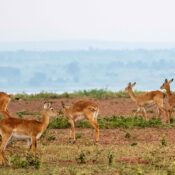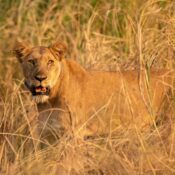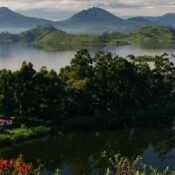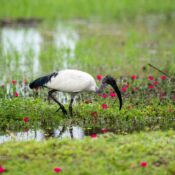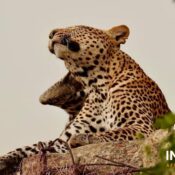“Bwindi” means Darkness, yet the forested national park is also impenetrable. The idea of an impregnable darkness ought to paint a picture of what Bwindi Impenetrable National Park is all about. This biodiversity hotspot located on the rim of the Albertine Rift Valley in Kanungu district in Southwestern Uganda is home to roughly half the world’s mountain gorilla population, harbors 370 bird species, over 200 butterfly species and 120 mammals, all finding shelter in its ancient mist-covered hillsides and steep ridges blanketed by one of Uganda’s oldest and most biologically diverse rainforests dating back over 25,000 years.
Boasting over 400 varied plant and at least 325 tree species, Bwindi is more famous for its impressive mountain gorilla population of about 460 with at least 9 habituated groups trackable by visitors. This is supplemented by various primate species like chimpanzees, baboons and monkeys and an array of other wildlife like forest elephants, antelopes, golden cats and duikers. Bwindi is also the source of 5 rivers which flow into Lake Edward, adding to the breathtaking beauty viewed atop any of the hilly ridges.
Suffice to say, a trip to Bwindi would be incomplete without a profound encounter with the endangered mountain gorillas and the Uganda Chimpanzees. The former can be tracked through any of the four trekking sectors; Buhoma, Ruhija, Rushaga and Nkuringo. A trek through the impenetrable and dark Bwindi reveals 327 square kilometers of tangled plant life repeatedly draped over a crevasse of steep, slippery
valleys and high, draughty ridges; a terrain that will test one’s mental fortitude and physical endurance, eventually and satisfactorily capped by enthralling gorilla encounters that remains one of the world’s premier wildlife encounters. In Bwindi, 23 of the over 350 different bird species are endemic to the Albertine Rift Valley including the Rwenzori Nightjar, Blue-headed sunbird, Chapin’s flycatcher, Shelley’s crimsonwing and the African green broad bill that can be viewed along the River Ivi trail, the longest in the park, the Buhoma waterfall trail and Mubwindi
swamp trail found in Ruhija.
Uganda is indeed the Pear of Africa because of the fascinating people and places and the communities around Bwindi pay homage to this eternal truth. Close interaction with the Bakiga and Batwa tribes offers deep insights into the values of order, hard work and creativity; the latter, a pygmy community largely made up of skillful craftsmen and pottery experts who still enjoy hunter-gatherer privileges.
Thus, into the impenetrable darkness we go, spurred on by an unquenchable thirst for companionship, for discovery, for an understanding far beyond that which our minds already comprehend. We tickle our senses, challenge our bodies and push our boundaries in the hope that in one of man’s most intimate and profound interactions with nature, therein lies the answers we so desperately seek.
Visit Bwindi Impenetrable National Park today!
